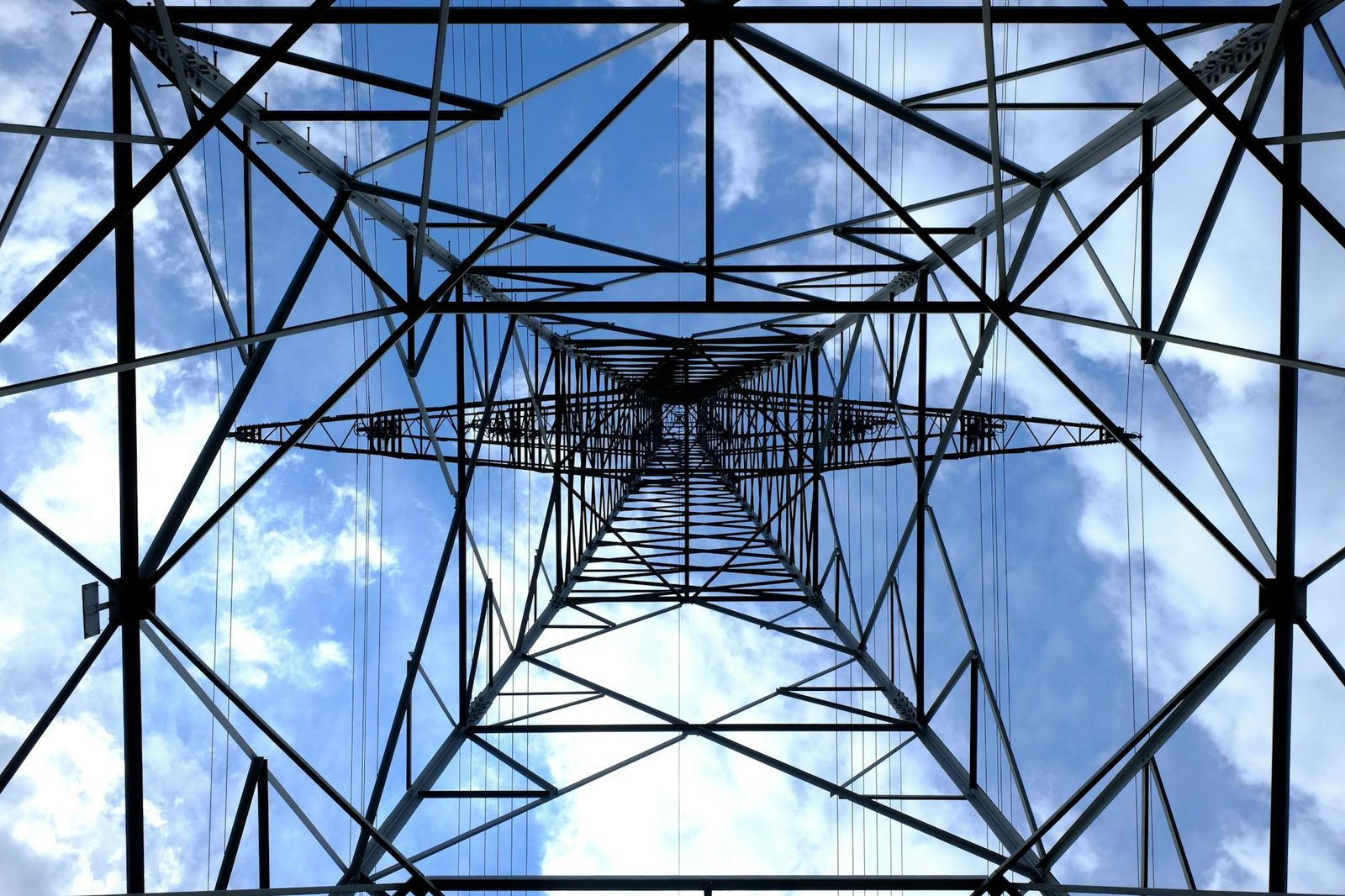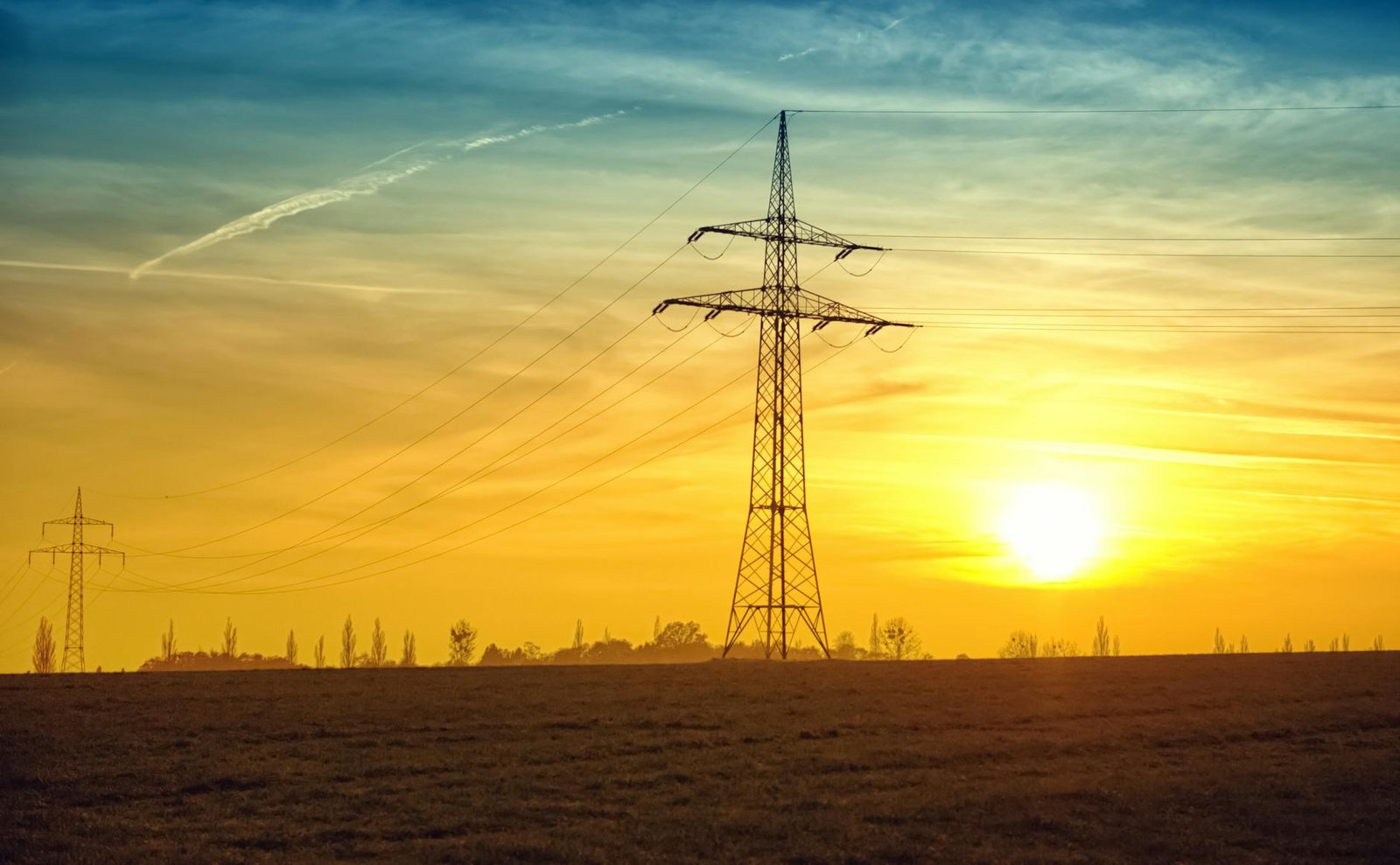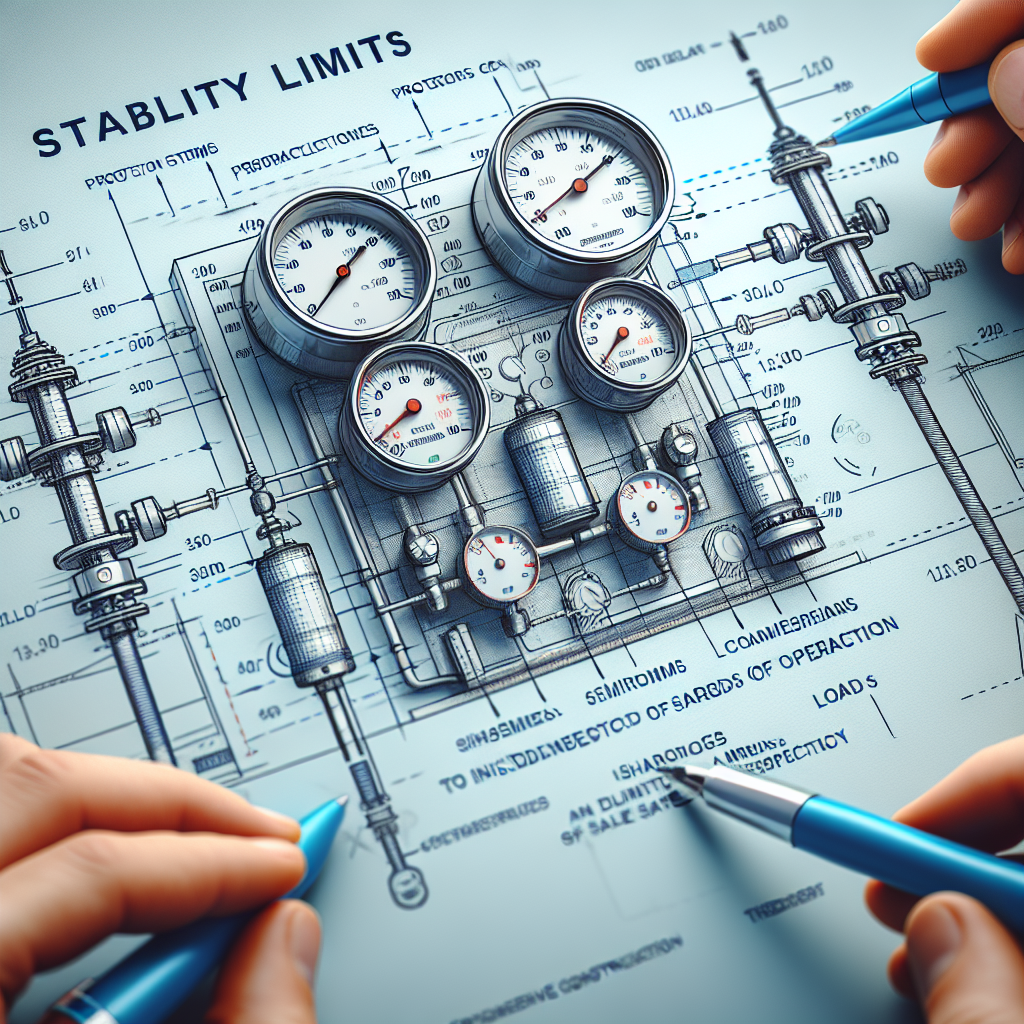Introduction to Power System Stability
Ever wondered why your lights don’t flicker every time someone in your neighborhood cranks up a high-powered appliance?
It’s all thanks to power system stability.
Stability in power systems is a fascinating and critical concept in construction and electrical engineering as it ensures a consistent power supply, minimizes disruptions, and maintains a balance between power generation and consumption.
In this blog post, we’ll take an in-depth look into the stability of power systems, key factors affecting it, the various forms it takes, and why stability is crucial in any power system. Additionally, we’ll explore the concept of a ‘stability limit’ and delve into the role of system dynamics and stability criteria in maintaining power system stability. Lastly, we’ll discuss how protective systems ensure this stability.
So, are you ready to illuminate your understanding?
Table of Contents
Stability in Power Systems: A Pertinent Construction Term

Before dwelling into the minutiae of the concept, let’s initially strip it down to the bare concept. The stability of a power system in construction refers to the system’s ability to regain its normal or steady state after any disruption or outage. In simple terms, it’s all about maintaining a balance between the generated power and the consumed load.
The Factors Affecting System Stability
Understanding what can impact the stability of a power system allows us to implement useful measures for its maintenance. Here are the key factors that can affect system stability:
- System size and structure
- Type of electrical loads
- Generation capacity
- Transmission capabilities
Types of Power System Stability
The stability of a power system is split into three main categories, which are essential to be identified:
- Transient stability
- Rotor angle stability
- Voltage Stability
Transient Stability
In moments following major system disturbances, transient stability is the system’s ability to maintain synchronism. This phase has a swift yet significant change in the balance between load and generation.
Rotor Angle Stability
As the name suggests, rotor angle stability is the ability to maintain synchronization of system elements under continuous operating conditions.
Voltage Stability
The ability of a system to maintain acceptable voltage at all buses in a system under normal conditions and after being subjected to a disturbance pertains to voltage stability.
Why Stability is Crucial
Ensuring power systems are stable is vital in maintaining regular supply and preventing system outages or blackouts. Stability helps maintain the equilibrium between generated power and load, avoiding potential damage and ensuring operational efficiency. Here are some reasons why stability is crucial:
- Uninterrupted power supply
- Prevents system damage
- Maintains operational efficiency
- Ensures a well-maintained power balance
For more in-depth knowledge of Power system stability, you can visit this ScienceDirect article. It offers a comprehensive study of the significance, types, and factors affecting the stability of a power system.
Exploring the Concept of Stability Limit
It’s clear how the stability of a power system is absolutely crucial in construction. This stability is intrinsically linked to a key term known as the ‘stability limit’. But, what does it mean? Let’s delve deeper into the concept.
The stability limit refers to the maximum power load that a system can handle without compromising on its overall stability. Once a system surpasses its stability limit, its synchronized operation can be disrupted, which may lead to a blackout.
Stability Limit and The Power System
Interconnected power systems are designed for certain load and generation capacities. The stability limit signifies the edge of these predetermined parameters. Any additions or alterations to these systems that surpass the stability limit can create an imbalance, leading to instability in the system.
How Is The Stability Limit Determined?
The stability limit isn’t a static figure. It varies based on several interconnected factors:
- The design and layout of the power system
- The type and volume of load
- The generation and transmission capacity of the system
Engineers need to analyze these various elements comprehensively to ascertain a power system’s stability limit.
Surpassing Stability Limit: The Consequences
If a power system’s stability limit is exceeded, several adverse consequences can occur:
- Operational Disruption: System operation can be impeded, affecting power delivery.
- Outages: Sudden and unexpected power outages can occur.
- Damage to Elements: System elements can incur severe damage if the stability limit is greatly exceeded.
- Safety Risks: Safety hazards may arise from these system disruptions and outages.
To help avoid these problems, professionals must monitor system performance regularly to ensure the stability limit is not exceeded. An insightful article by IEEE provides detailed guidelines on power system stability analysis.
Managing Stability Limit: Techniques and Tactics
There are a variety of strategies that can be employed to manage a power system’s stability limit effectively:
- Efficient Design: Power systems should be designed intelligently keeping the stability limit factored in.
- Regular Monitoring: Systems should be monitored regularly to detect any discrepancies before they become a major issue.
- Load Management: Managing the amount of load at any given time can help ensure the stability limit is not exceeded.
The concept of stability limit is paramount in ensuring efficient and uninterrupted operation of power systems. By understanding and respecting this limit, we can optimize system performance and prevent unnecessary disruptions.
System Dynamics and the Power System Stability

Often overlooked is the concept of system dynamics in power system stability. System dynamics is primarily concerned with the patterns of change over time, revealing the behavior of the system through its responses to various disturbances.
System Dynamics in Stability Analysis
In essence, the role of system dynamics in power system stability involves the use of mathematical models and computer simulations to predict how a power system might react to different disturbances. Several key considerations are involved:
- Performing transient stability analysis
- Evaluating the dynamic response of the system
- Identifying potential causes of instability
It’s worth mentioning that proper understanding of system dynamics assists in designing robust power systems, ensuring they maintain stability and reliability under a wide range of operating conditions.
Dynamics in Transient Stability
Transient stability, one of the types of power system stability, heavily involves dynamics. Transient stability speaks to a power system’s ability to withstand sudden disturbances, such as electrical short circuits or sudden changes in load. Here, system dynamics plays a significant role in analyzing the capability of the system to maintain its operation following such disturbances.
Aspect of Dynamics in Rotor Angle Stability
Similarly, in rotor angle stability, system dynamics also play an essential role. This aspect of stability focuses on the ability to maintain synchronization of the system components under normal operating conditions. Through system dynamics, engineers can model and predict the system’s response to small disturbances that continually occur due to variability in load and generation.
Influence of Dynamics on Voltage Stability
Voltage stability, the third form of stability, also critically leans on system dynamics for assessing system responses to various disturbances. Voltage stability concerns the ability of a power system to maintain acceptable voltage levels at all the bus systems under normal conditions and after the occurence of a disturbance. This stability ensures the safe, reliable distribution of power.
An insightful Penn State University article explores deeper into how the principle of system dynamics aids in understanding power system behavior, leading to enhanced stability.
Understanding The Stability Criteria
While we’ve comfortably established the importance of power system stability and system dynamics’ significant role, another key facet worth a look is the ‘stability criteria’. In the simplest sense, stability criteria are the standards or benchmarks that define whether a power system remains stable under various operating conditions.
Significance of Stability Criteria
Stability criteria are instrumental in the design and operation of power systems. They provide engineers with guidelines to ensure that the power system remains stable, even under disturbances.
Parameters Considered For Stability Criteria
The assessment of stability criteria requires careful consideration of numerous factors:
- System loads
- Generation capabilities
- System dynamics
- Network configuration
These parameters jointly dictate the operating limits within which the power system maintains its stability.
Effects of Non-adherence to Stability Criteria
Non-adherence to stability criteria can lead to several unfavorable outcomes, such as:
- Unstable system operation
- Possible system damage
- Unpredictable power supply interruptions
By rigorously embracing the stability criteria, one can ensure a smooth, reliable, and efficient operation of the power system.
Strategies For Adherence to Stability Criteria
Effective strategies for adherence to stability criteria include:
- Studying the system’s dynamic behaviour
- Involving criteria in system design and operation stages
- Regular system monitoring and testing
Implementing these strategies can significantly improve power system performance, resulting in a robust, stable power supply.
Requirements of a Protection System
Given the detailed overview provided on the crucial components and factors influencing the power system’s stability, it is now key to discuss the requirements of a protection system for maintaining this stability.
Protection Systems: A Brief Overview
A protection system is designed to safeguard a power system by identifying and isolating faults as quickly as possible. By promptly detecting faults and isolating affected sections of the system, protection systems help to minimize disruption to the power supply and prevent damage to equipment.
Requirements for Effective Protection
Effective protection in a power system largely depends on several factors. Here are the key requirements that a protection system should meet:
- Reliability: Reliability, as one of the primary requirements, ensures no failure in the protection system.
- Speed: Quick detection of faults helps minimize the damage caused.
- Selectivity: The system should have the ability to minimize the impact by disconnecting only the faulty component of the network.
- Sensitivity: The capacity for recognizing and reacting to a diverse range of system faults.
Protection System Components
The main components of a protection system include:
- Protective Devices: These are designed to respond to changes in current or voltage.
- Circuit Breakers: Used to isolate faults on the network.
- Relays: Devices that detect and locate faults by measuring electrical quantities.
The Role of a Protection System in System Stability
We know that maintaining power system stability is crucial, and that’s where protection systems come into play. They identify, isolate, and rectify any faults that might impact system stability. The main roles of a protection system are:
- Fault Detection: Identifying abnormalities or faults in the system.
- Fault Clearance: Disconnecting the faulted part from the system quickly to prevent more extensive system disruption.
- System Restoration: After fault clearance, a protection system helps in quick system restoration to normalcy.
All factors combined, a protection system plays a vital role in maintaining power system stability, leading to efficient and reliable power supply operation. For a detailed understanding of how protection systems work, you can refer to this U.S. Department of Energy report on the Reliable and Resilient Power Systems.
Reinforcing the Steadiness: Power System Stability
Understanding power system stability, its categories, and the crucial concept of system dynamics is fundamental for preventing outages in construction settings. Key influences on system stability include the design of the system, electrical loads within that structure, and the generation and transmission capabilities in place.
Power system stability is classified under transient stability, rotor angle stability, and voltage stability. Each provides an essential aspect of maintaining the balance of load and consumption within a power system. Exploring the underlying concepts of stability limit and surpassing it, we can gather the importance of not exceeding these parameters to prevent operational disruptions, potential damage to system equipment, and even safety hazards.
Underpinning this is the essential role of system dynamics in tracking patterns of change and predicting how power systems react to different disturbances. This comprehension is followed inevitably by the relevance of stability criteria and protection systems in ensuring the smooth operation and prevention of unforeseen system damage.
Frequently Asked Questions – FAQs
What is power system stability?
Power system stability refers to the system’s ability to regain its normal or steady state after any disruption or outage.
What are the types of power system stability?
Power system stability is categorized into transient stability, rotor angle stability, and voltage stability.
What happens when the system surpasses its stability limit?
When a system exceeds its stability limit, it can lead to operational disruptions, system damage, and safety risks.
What role does system dynamics play in power system stability?
System dynamics is crucial for predicting how a power system might react to different disturbances.
What are stability criteria?
Stability criteria are the standards that define whether a power system remains stable under various operating conditions.
Why is a protection system crucial for power system stability?
A protection system is essential for identifying, isolating, and rectifying any faults that might impact system stability.






